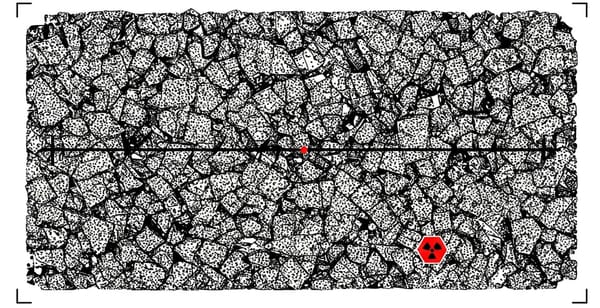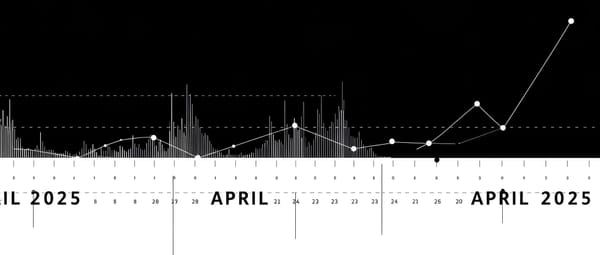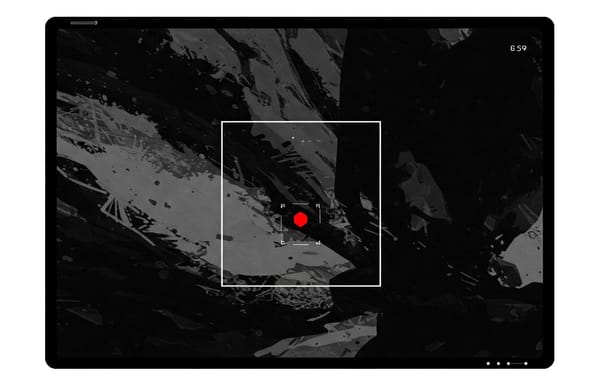Reducing False Alarms in Radiation Detection: How AI is Transforming Border Security
False alarms in radiation detection disrupt trade and waste resources. AI-driven systems like ERNIE are transforming border security by reducing false positives while enhancing threat detection. Learn how machine learning is making cargo screening smarter.
The Challenge of Radiation Screening
Thousands of trucks, shipping containers, and vehicles cross borders daily and pass through Radiation Portal Monitors (RPMs)—large detection systems designed to identify radioactive materials that could pose a security threat. These systems are critical for preventing nuclear smuggling, ensuring public safety, and maintaining regulatory compliance in global trade.
However, there’s a fundamental problem: false alarms.
Many naturally occurring radioactive materials (NORMs), such as potassium-rich fertilizers, ceramics, and even some medical isotopes, can trigger the same alerts as weapons-grade nuclear materials. This forces authorities to conduct costly and time-consuming secondary inspections, disrupting supply chains and stretching limited resources.
A team of researchers from Lawrence Livermore National Laboratory and Carnegie Mellon University has developed an AI-driven solution: ERNIE (Enhanced Radiological Nuclear Inspection and Evaluation). This machine learning system dramatically reduces false alarms while maintaining or improving threat detection capabilities.
Why False Alarms Are a Major Problem
Radiation detection at ports and borders operates on a delicate balance:
• Set sensitivity too high, and the system flags harmless materials, overwhelming inspectors with false alarms.
• Set sensitivity too low, and security risks go undetected.
The current approach relies on fixed thresholds—meaning any radiation reading above a pre-set limit results in an alarm. This simplistic method struggles to differentiate between benign and potentially dangerous sources, leading to alarm rates as high as 10% in some locations.
Since each flagged shipment requires manual verification, this creates significant operational inefficiencies:
✔ Economic costs – Delays in shipping and commerce due to unnecessary inspections.
✔ Resource allocation – Security teams spend time on harmless cargo instead of threats.
✔ Compromised security – Too many false alarms can lead to alert fatigue, increasing the risk of real threats being overlooked.
How Machine Learning Enhances Radiation Detection
ERNIE uses a data-driven approach rather than rigid thresholding. Here’s how it works:
1️⃣ Training on Real-World Data
ERNIE’s model was trained on over 100,000 actual RPM scans, incorporating many cargo types, shielding materials, and radiation sources. Additionally, it includes simulated scans to ensure it recognizes rare but critical threat scenarios.
2️⃣ Pattern Recognition and Feature Extraction
Instead of relying solely on raw radiation intensity, ERNIE analyzes multiple factors:
• Spectral signatures – The unique energy distributions of different radioactive materials.
• Spatial distribution – How radiation is spread across a vehicle or cargo container.
• Motion data – How the cargo moves through the detection system, allowing for better localization of radioactive sources.
3️⃣ Probabilistic Decision-Making
ERNIE doesn’t simply classify detections as “safe” or “dangerous.” Instead, it assigns a confidence score to each scan, allowing security teams to prioritize high-risk cases while dismissing low-probability false alarms.
The Impact: Smarter Screening, Faster Trade
Field deployments of ERNIE have shown dramatic improvements in operational efficiency:
🚛 False alarms reduced by up to 90% – Cargo that previously triggered unnecessary alerts now passes through seamlessly.
🔍 Increased threat sensitivity – AI identifies previously undetectable weak signals that could indicate shielded nuclear materials.
⏳ Faster inspections – By pinpointing the exact location of radioactive sources, ERNIE reduces the time required for manual checks.
The success of ERNIE is part of a more integrating trend: the integration of AI into national security and threat detection. Future advancements could include:
🔹 Multi-source detection – Differentiating between overlapping radiation sources (e.g., a legitimate medical isotope near an illicit material).
🔹 Real-time adaptation – Continuous learning from new data to adjust sensitivity in response to emerging threats.
🔹 Cross-modal integration – Combining radiation detection with X-ray imaging and other inspection technologies for comprehensive screening.
Machine-learning
ERNIE demonstrates that AI-driven analytics can enhance security without compromising efficiency. By shifting from static rule-based systems to adaptive machine-learning models, researchers are creating a future where radiation detection is more accurate and less disruptive.
Should AI be incorporated into more security screening processes? Share your thoughts below!
Article Source
here, you will find the original article: https://www.sciencedirect.com/science/article/pii/S0168900224010490




